|
Travel with us Personalising the Epics: Amar Nath Sehgal's 'Mythologies'The Editorial Team May 01, 2023 The India International Centre (I. I. C.) at New Delhi, in collaboration with the Amar Nath Sehgal Private Collection, presented a large suite of works by Amar Nath Sehgal (1922—2007), one of post-independent India’s foremost sculptors, in order to celebrate his centenary year in March 2023. Born in Campbellpur (now Attock), in present-day Pakistan, Sehgal’s long career took him across the world, including metropolitan centres like New York, as well as Luxembourg—giving him a rounded view of the global networks of modern art, eventually settling down in New Delhi towards the end of his life. The show, curated by Uma Nair, was especially revelatory in foregrounding his extensive work in painting, serigraph-making and drawing, although some his iconic sculpted pieces also found space. The curator spoke briefly with the DAG Journal’s editorial team to put the exhibition in context. |
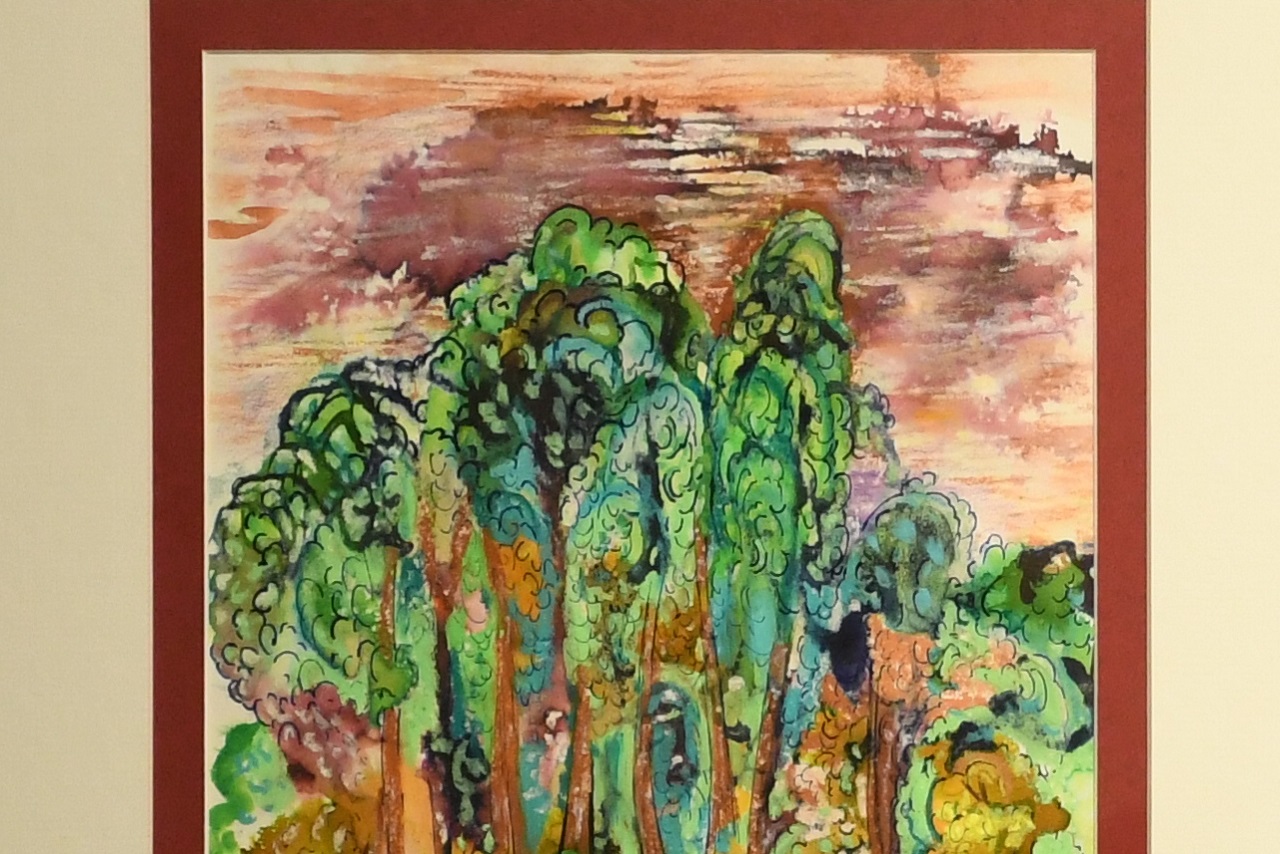
Amar Nath Sehgal
The Spirit of Sita (detail), Mixed media on paper, 22.5 x 29.5 cm.
Image credit: Shazid Chauhan
|
The exhibition explores Sehgal’s lifelong interest in Indian mythological narratives—especially the two major epics, The Mahabharata and the Ramayana. Characters from these epics are represented in the throes of struggle—with their intimate others, with themselves, and with the landscape. The natural landscape of India, its flora and fauna, intrude regularly into Sehgal’s works—reflecting his own passionate engagement with nature. His last studio in New Delhi’s Jungpura was surrounded by wooded landscapes, giving him a taste of sylvan bliss in the middle of industrial urbanism. In his series of works on the epics, he transforms these ancient works into sources of sustenance and inspiration for struggle against the predations of the modern world. |
|
Amar Nath Sehgal Returning together to their Hut, Mixed media on paper, 15.5 x 20 cm. Image credit: Shazid Chauhan |
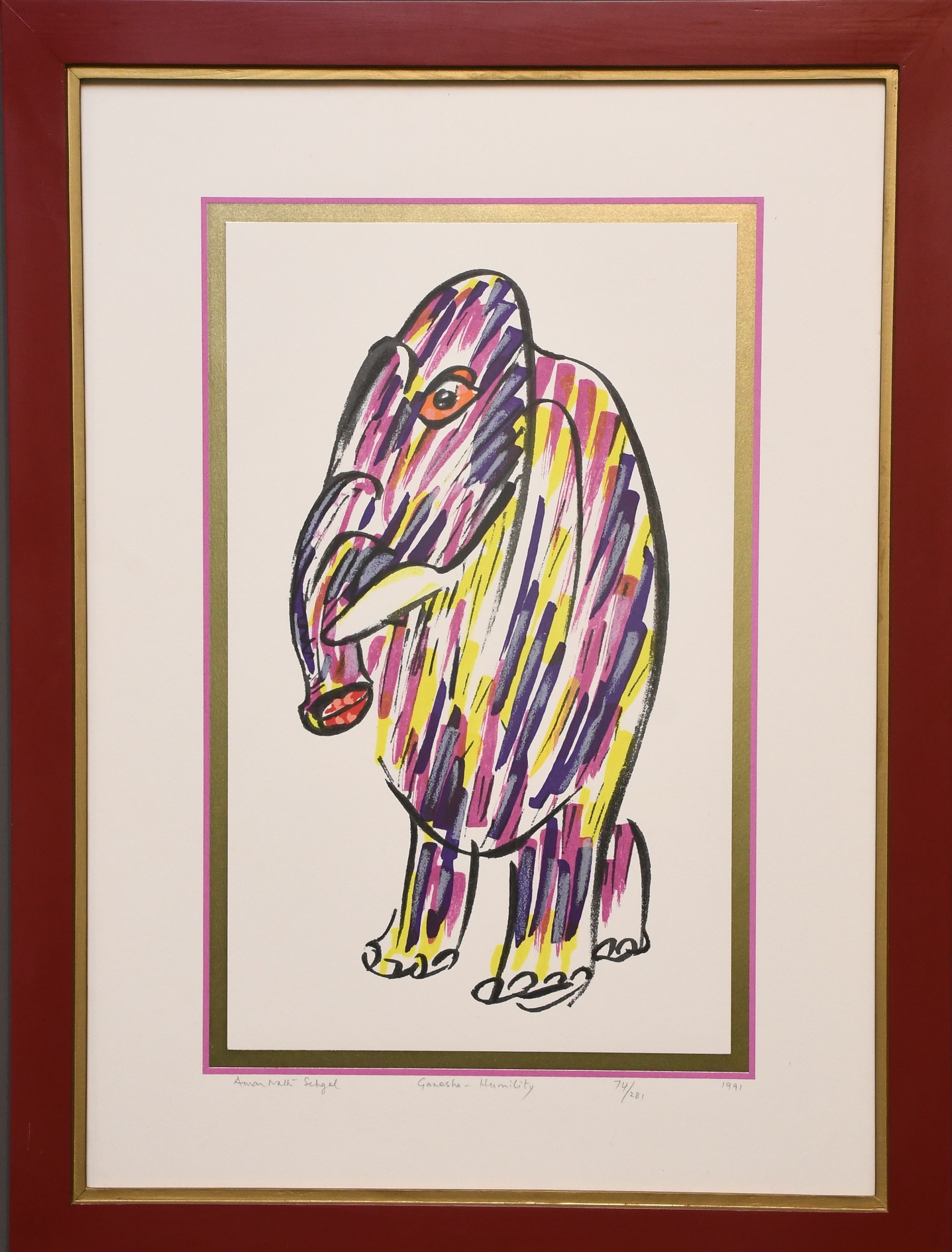
Amar Nath Sehgal
Ganesha – Humility
Serigraph Print on paper, 62 x 44.3 cm, 1991
Image credit: Shazid Chauhan

Amar Nath Sehgal
Ganesha - Dancing in Ecstasy
Serigraph Print on paper, 62 x 44.3 cm., 1991
Image credit: Shazid Chauhan
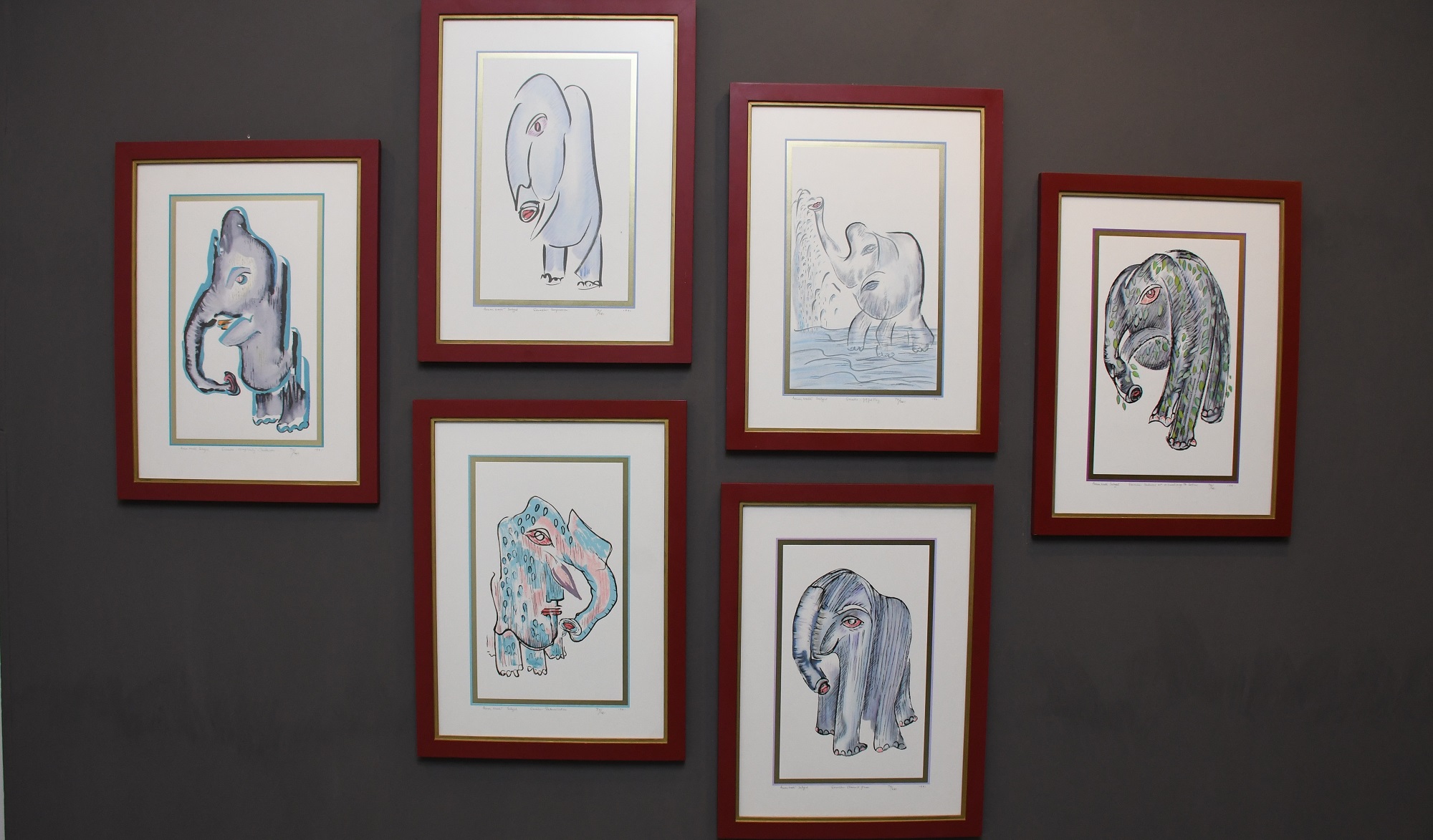
Installation view of the Serigraph series.
Image credit: Shazid Chauhan
Serigraph SeriesAlthough he is best-known for his sculptures, this late-career Serigraph series offers a fascinating digression in style if not idea. In terms of the latter, the transformative potential embodied by Ganesha, the divine scribe, remains at the root of Sehgal’s vision—as explored by many of his famous sculptures as well, but stylistically it offers a refreshing departure and helps the viewer locate the essence of the Ganesha myth as a template for continued renewal in Sehgal’s own practice. |
|
‘…the form of Ganesha is intrinsically the Elephant, yet endowed with human feelings of strength and power, simplicity, tenderness, playfulness with water, love of arts – dance, flying to celestial resorts, determination, elegance, humility, compassion – the traits universally acclaimed and even garlanded by nature. These are pronounced human attributes, which Ganesha possessed, which I have tried to depict keeping the predominantly pictorial symbol of the Elephant. In fact I mingled the human and elephant forms in these compositions. They breathe the various human attributes conspicuously – a part of Lord Ganesha's character.’ –Amar Nath Sehgal, June 1991 |
|
Amar Nath Sehgal Ganesha - Flying to celestial resorts (detail), Serigraph Print on paper, 62 x 44.3 cm, 1991 Image credit: Shazid Chauhan |
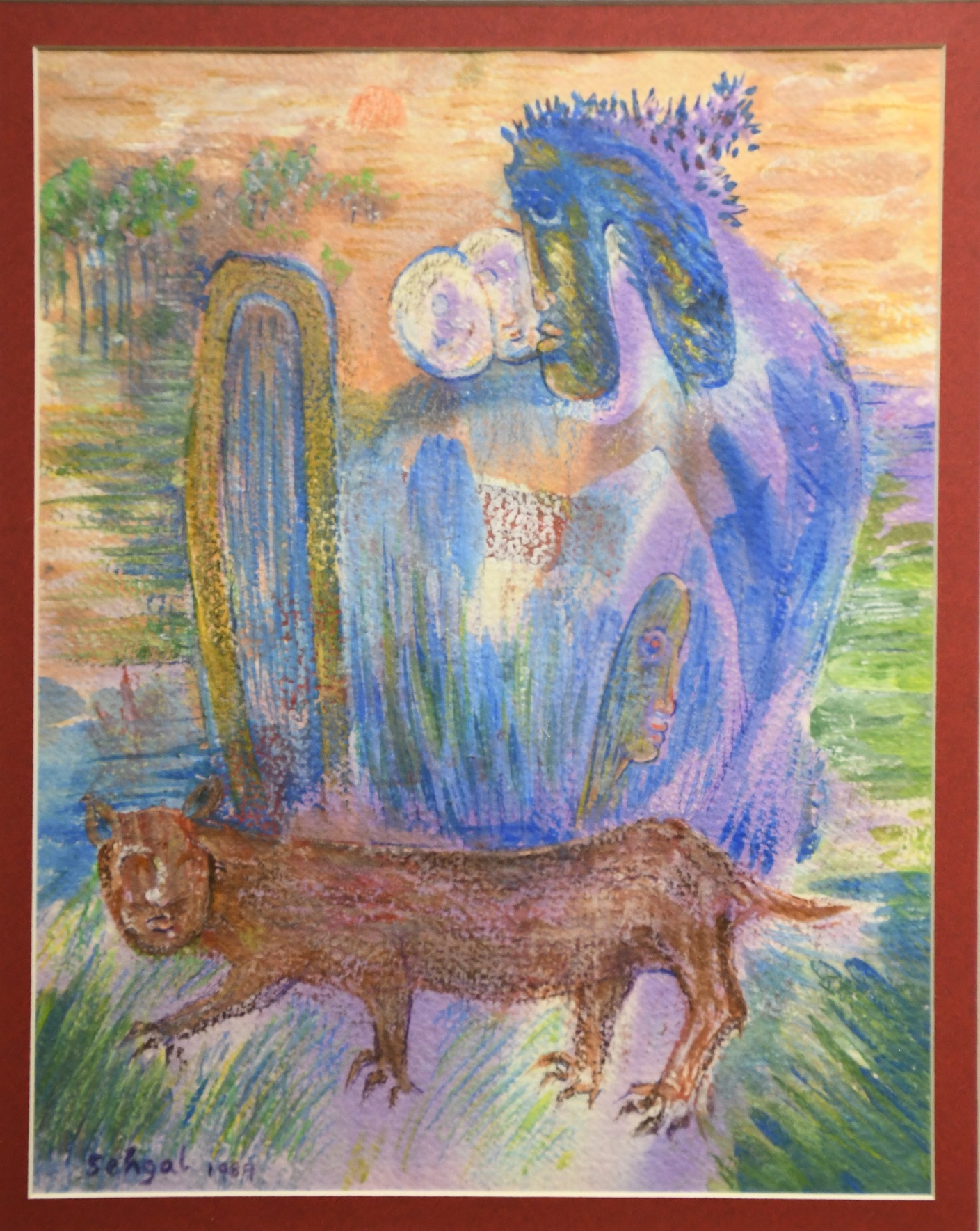
Amar Nath Sehgal
Tigress With the Five Pandavas
Mixed media on paper, 19 x 25 cm.
Image credit: Shazid Chauhan

Amar Nath Sehgal
The Sacred Forest (Chitrakoot)
Mixed media on paper, 29 x 22.5 cm.
Image credit: Shazid Chauhan

Amar Nath Sehgal
Nature Blooms on Rama’s Return to Ayodhya
Mixed media on paper, 29 x 37 cm.
Image credit: Shazid Chauhan
The series foregrounds Sehgal’s interest in presenting the narratives of animals and natural elements including trees and forests (like the Chitrakoot forest, where Rama, Sita and Lakshman spent their years in exile) as active agents within the epics as well. With its transmogrifying land, animal and human-scapes, each eventually merging into the other, the drawings, sketches and serigraphs attempt to seek that mythic nondualistic unity in all creation, making Sehgal a true ‘creationist, instead of a mere producer’, as Nair put it. |
|
The use of a language of exile allows Sehgal to reflect on his own periods abroad, away from his country, as well as the alienation of his birthplace in present-day Pakistan from his adopted country, India. The various layers of the artist's exilic experience find expression in the need for transformation and movement. |
|
Amar Nath Sehgal Sound of Music (detail), Mixed media on paper, 20 x 28 cm. Image credit: Shazid Chauhan |
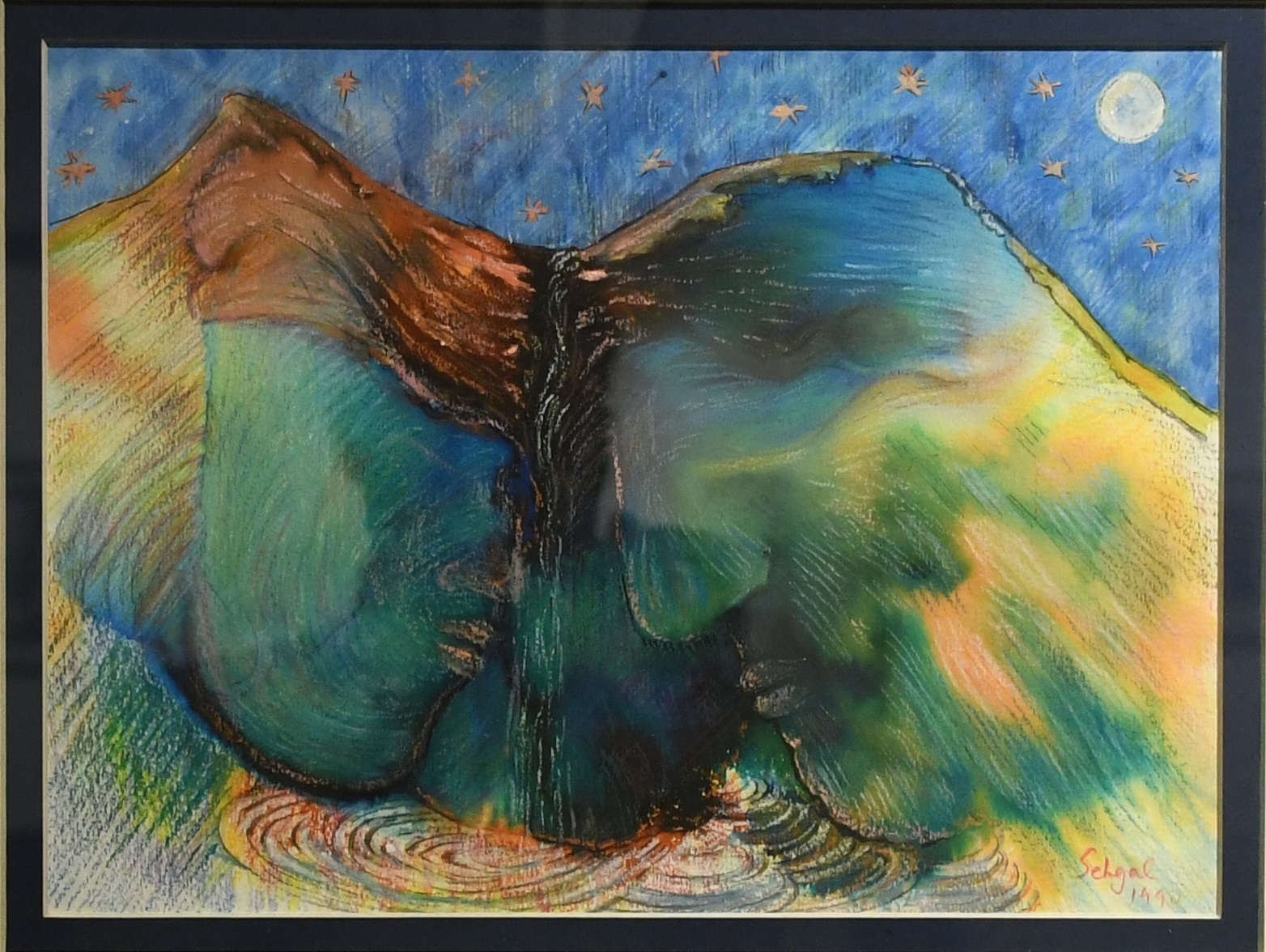
Amar Nath Sehgal
How Dare You
Mixed media on paper, 26 x 34.5 cm.
Image credit: Shazid Chauhan
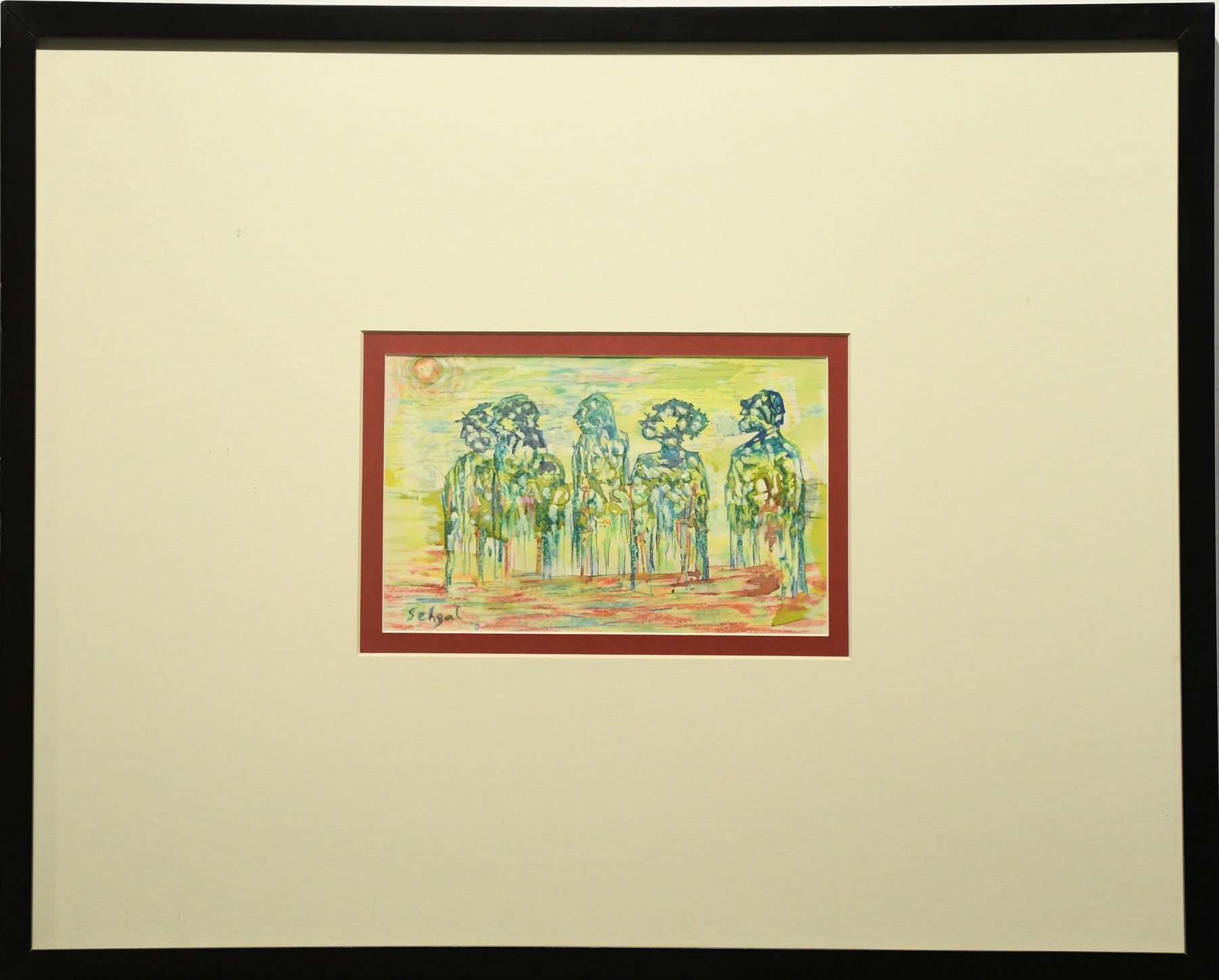
Amar Nath Sehgal
The Five Pandavas
Mixed media on paper, 12.5 x 20 cm.
Image credit: Shazid Chauhan
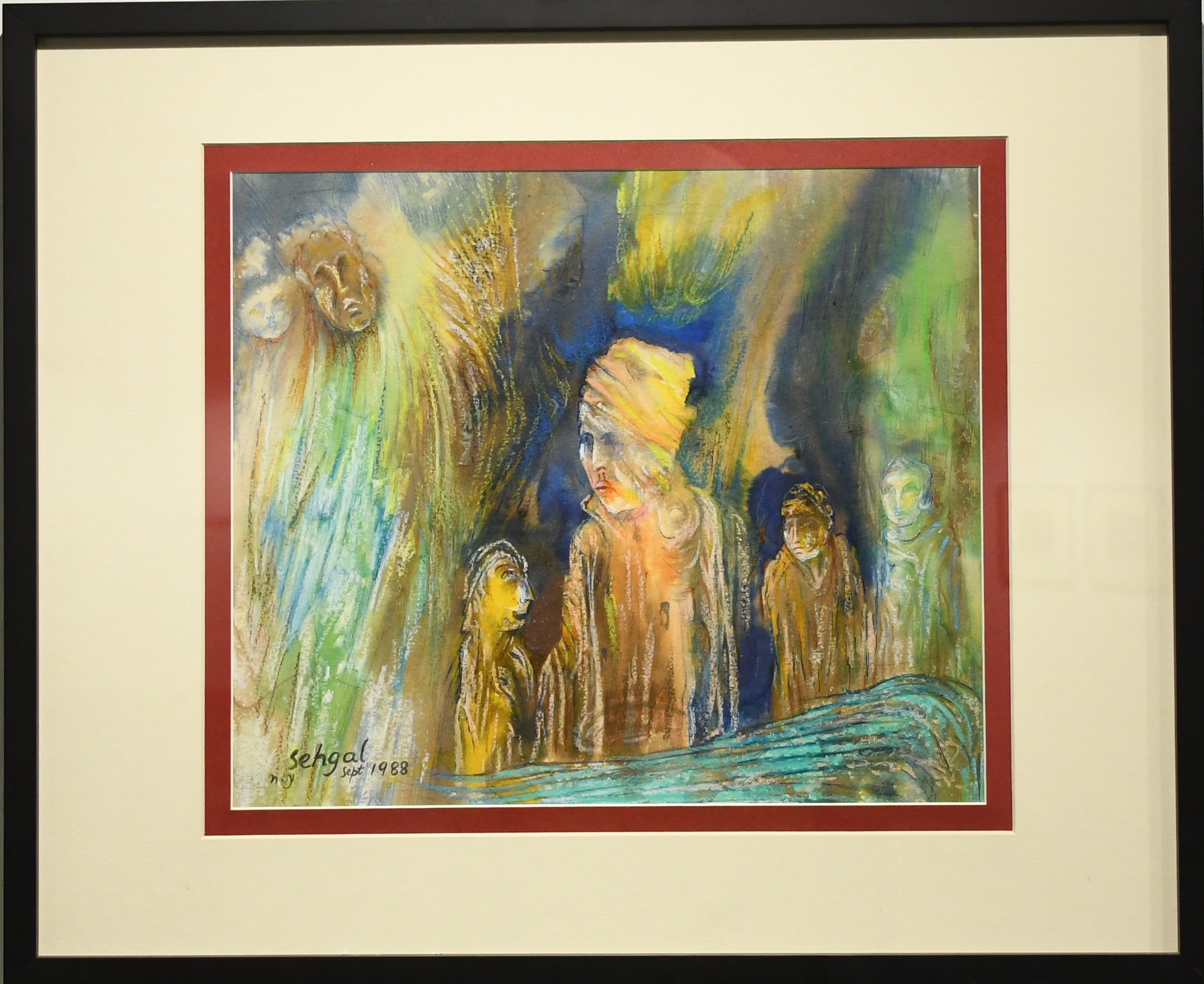
Amar Nath Sehgal
Farewell – Towards Exile
Mixed media on paper, 35.5 x 29 cm.
Image credit: Shazid Chauhan
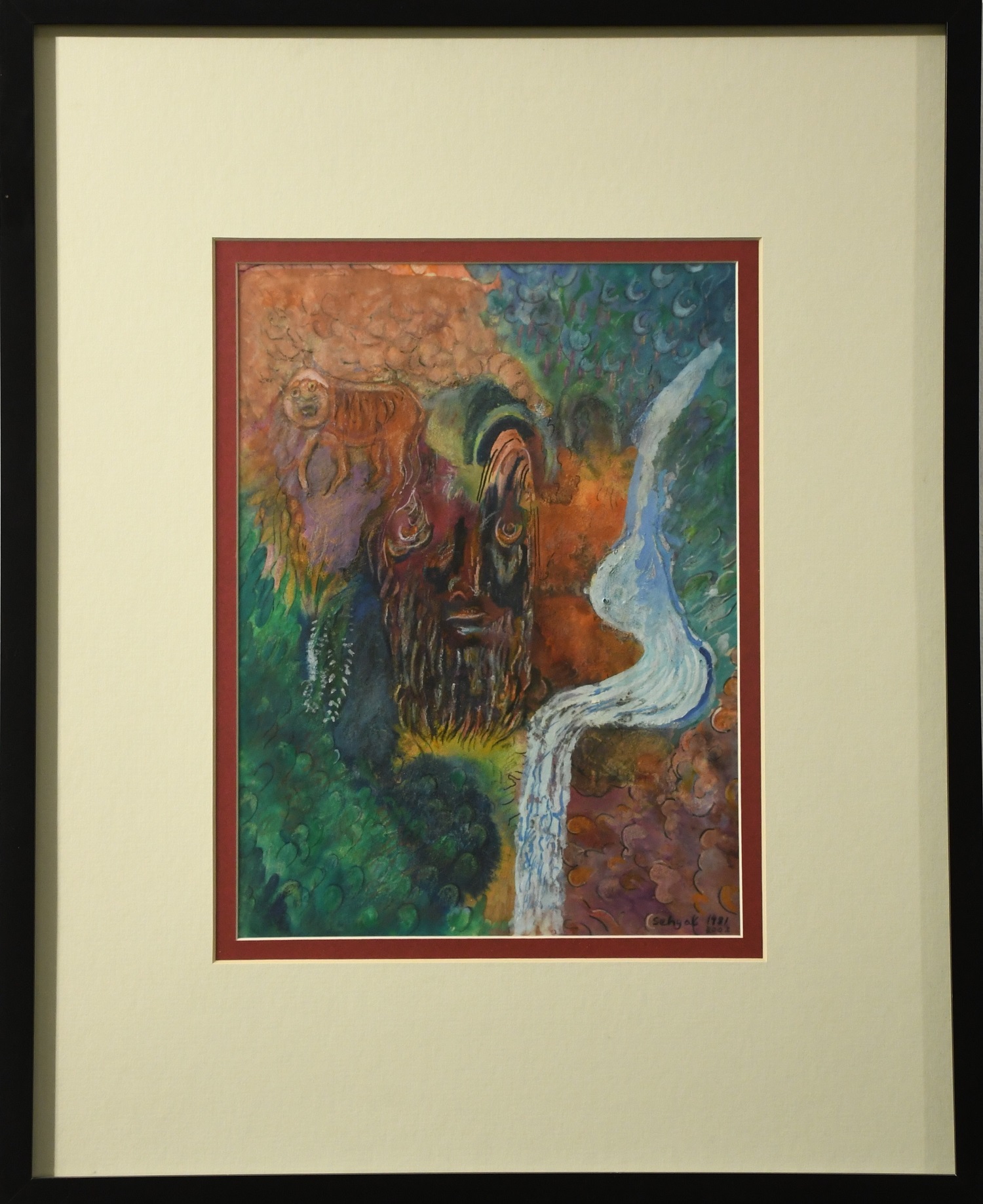
Amar Nath Sehgal
Bhagvan Vyas in his Ashram
Mixed media on paper, 20 x 29.5 cm.
Image credit: Shazid Chauhan
Sehgal’s epic series also revels in recreating crucial scenes of human discord and the tentative chances for harmony as envisioned by the epics. Featuring scenes of Sita’s abduction, Ravana’s dreams and the figures of the Pandavas rendered almost as a part of nature as if to suggest that sacred goodness flows directly from an embrace of our organic surroundings, the works present a subversive take on the modern anthropocentric view of the world that we share with so many other living beings. In a work like Bhagvan Vyas in his Ashram, we see the author of the Mahabharata, another exilic, creative figure that finds resonance with Sehgal himself, shown in harmony with his natural surroundings and waterbodies. |
|
As Nair put it: ‘This suite of works is a tribute to his love for Indian mythology, his elephantine eagerness in translating tales as old as history, events older than tradition and stories that never grow old… the stories of the epic Ramayana and Mahabharata unravelled like abstracted tales that revisited the making of the everyday, thereby bringing mythology closer to the lived experience of humanity. |
|
Amar Nath Sehgal Nature in Rage (detail), Mixed media on paper, 30.5 x 38.5 cm. Image credit: Shazid Chauhan |


